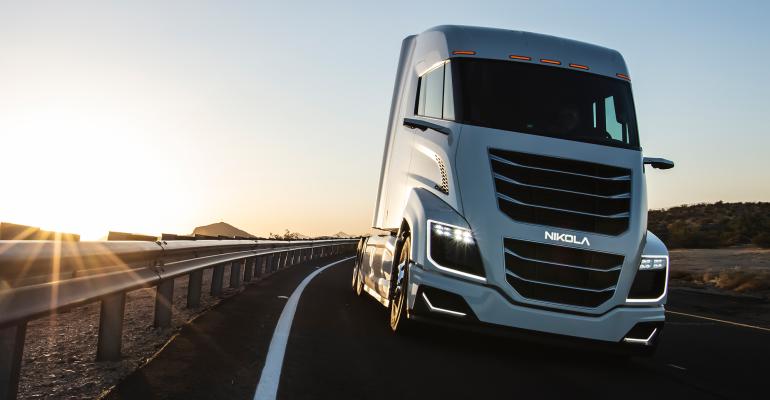Nikola and E.ON Hydrogen are partnering in Europe to put hydrogen-powered heavy trucks on the road that are price-competitive with diesel.
The plan calls for some 5,000 trucks to be on the road by 2027, with a further acceleration after that. The companies estimate that as the trucks roll out, there will be CO2 savings of 560,000 metric tons by 2027.
The technology is expected to make its way to North America, where emissions standards for heavy trucks are being toughened.
The Biden Admin. has just announced stricter standards on smog-forming emissions from trucks, vans and buses that will necessitate taking diesel-powered vehicles off the road starting in 2027. The new rules from the EPA are more than 80% stronger than current rules and are the first update to clean-air standards for heavy-duty vehicles in more than 20 years.
There is a wave of interest in Europe and North America, driven by tougher CO2 targets by the international Paris Climate Accords and California, and by incentives established by the European Union and Biden Admin., to replace diesel-powered heavy trucks with hydrogen fuel-cell batteries to reduce carbon emissions. Major truck makers like Mack, MAN, Volvo and other leaders in the segment are all working on hydrogen-fuel-cell replacement powertrains that can be scaled up.
Nikola and E.ON Hydrogen, a subsidiary of European energy provider E.ON, say they are out to make hydrogen-fuel-cell trucks cost-competitive with diesel in terms of total cost of ownership, not just initial price.
The joint venture is intended to cover the entire value chain of the hydrogen industry, from the supply of green hydrogen to the establishment of a demand-driven fueling infrastructure, to the provision of FCEVs. Green hydrogen is H2 produced from renewable energy sources such as wind and solar.
The companies plan to power up to 5,000 Nikola Tre FCEVs, which have a range of 497 miles (800 km), with green H2.
“To ensure the hydrogen infrastructure is in place to support our customers, we are working with our partner E.ON on cost-efficient and sustainable road transport solutions,” says Nikola President and CEO Michael Lohscheller. “Significant interest in our bundled lease program consisting of the Nikola Tre FCEV, hydrogen fuel and maintenance is a game changer for the industry and is an added benefit as it simplifies and lowers the total cost of ownership for fleet and truck owners.”
Though Tesla recently introduced its battery-electric Tesla Semi, there is prevailing sentiment that hydrogen fuel cells are more suitable for semi-trucks because batteries take up too much payload. Still, Frito-Lay and UPS are among the first clients to try out the Semi BEV trucks in their fleets.
The expectation is that commercial trucks will evolve into a combination of FCEVs and BEVs depending on the needs of fleet managers in terms of cost management, distances traveled by respective trucks and payload efficiency.
Nikola, for example, also offers a BEV version of its truck, though it is positioned and optimized more for shorter distances. The Class 8 Nikola Tre BEV semi-style tractor will be used to move paving equipment, transport construction materials and pull other heavy equipment at Los Angeles International Airport worksites. Los Angeles World Airports (LAWA) is the first government entity to take delivery of a Nikola Tre BEV, which is part of the airport's ambitious plan to fully transition its vehicle fleet to all-electric. It’s also the first zero-emission Class 8 tractor in the City of Los Angeles’ municipal fleet.
The biggest obstacles to hydrogen taking off in the U.S. are the cost of fuel cells and insufficient refueling infrastructure. But the U.S. government is reviewing proposals to establish six to 10 “hydrogen hubs” strategically placed around the country to take advantage of the heaviest truck routes so that FCEV heavy trucks can more easily displace diesel.





